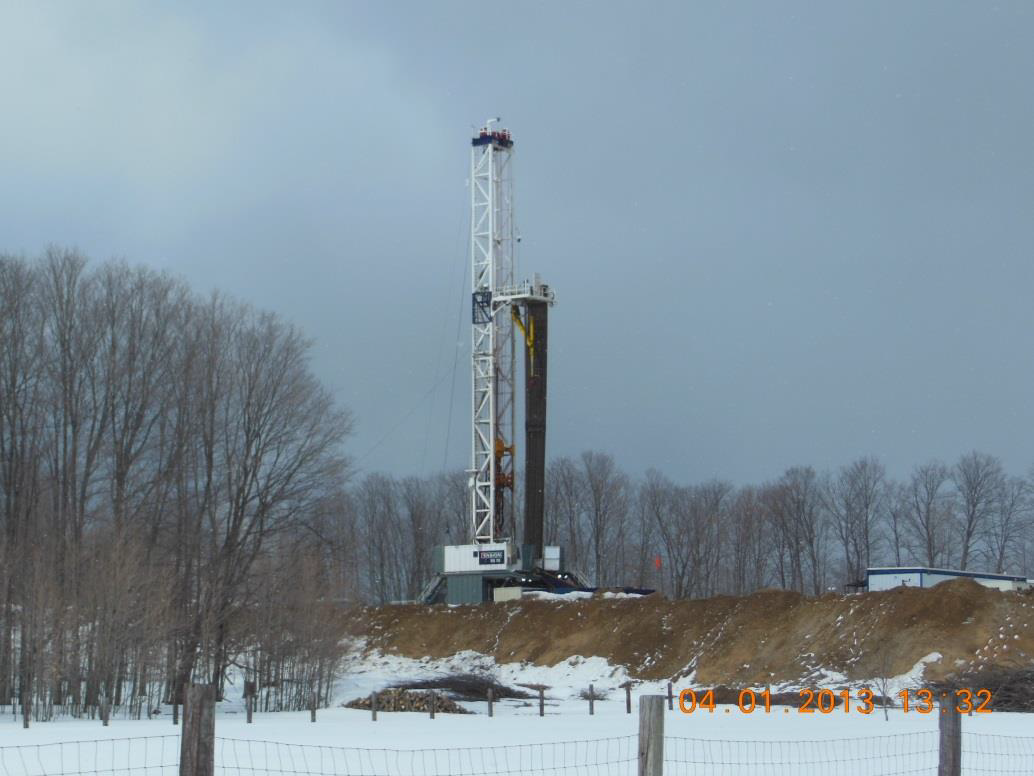
Click here to view the press release as a PDF
Fracking creating major water consumption issues near Kalkaska
Unable to get 8.4 million gallons of water at site, Encana forced to buy water from Kalkaska, Mancelona city systems
For Immediate Release
June 4, 2013
Kalkaska, Michigan
Concerns about the impact to local groundwater by massive water use- on a scale never before seen in Michigan fracking operations- are coming to a head, as Encana Oil and Gas’s plan to use 8.4 million gallons of water to fracture a single well has been stymied by a lack of water on site.
Instead, the company is trucking water – nearly 1 million gallons of it in just one week – from the City of Kalkaska’s water system to meet its needs. This one fracking operation today is using more water than the Village of Kalkaska is using for all its needs over the same time period.
The Westerman 1-29 HD1 gas/oil well, located on Wood Road in Rapid River Township, Kalkaska County, originally permitted to Chevron Michigan, LLC is now being operated by Encana Oil & Gas (USA), Inc.
The permit issued by the Michigan Department of Environmental Quality authorized one water well on the site. The estimated water required for the gas/oil well was 8.4 million gallons. (That compares to about 10,000 gallons used to complete or “stimulate” wells in the traditional way – a massive increase in consumptive water use by the fracking industry compared to the past.)
The Michigan Water Withdrawal Assessment Tool (WWAT) estimated that 900 gallons per minute could be removed safely from the site and would cause no adverse resource impact. As it turns out, there isn’t enough water available on the site to provide 900 gallons per minute, let alone be safely removed.
An additional eight water wells were drilled on the site but apparently they did not produce either. Starting on May 31, 2013 water began being removed from the Kalkaska municipal water system to frack the gas/oil well.
The municipal withdrawal did not come close to supplying the water necessary to complete the Westerman well, so on Saturday, another water well was drilled off the site in the surrounding field.
That water well also failed to produce sufficient water and trucks running around the clock continued to haul over 900,000 gallons of water from the Kalkaska municipal system over the weekend. At last report on June 4, 2013 the water was still being trucked to the well site from the municipal water supply.
Local resident and leading contributor of respectmyplanet.org, Paul Brady, states “If the citizens of Michigan knew corporations were destroying hundreds of millions of gallons of Michigan water – water that is supposedly protected by government for use by all of us – they would be opposing this new kind of completion technique. These deep shale unconventional wells are using massive amounts of water without adequate testing and solid data on aquifer capacity.”
Brady noted that the new fracking methods permanently remove water from Michigan’s watersheds. It is polluted with chemicals, shoved deep into the ground, and never returned to the water cycle. Encana has stated in shareholder presentations that up to 500 wells are planned for Michigan. Five new wells were permitted in Excelsior Township last week that estimate using 152,000,000 gallons of water. Eight more permit applications are pending.
The water use for these types of wells in Michigan is unprecedented: there is no gas or oil play in the entire USA that is using this much water per well.
The Michigan DEQ has taken some steps recently to try and deal with the astounding amounts of water destroyed by modern fracturing. But as of today, the primary tools that they are using to determine adverse impact to our water are inadequate to even judge how much water is available in any given location (as demonstrated by the Rapid River well situation), never mind how much can be safely removed. Michigan has no groundwater maps of this area; state officials don’t know how much water withdrawal our aquifers in Kalkaska County can support.
There is a way to find this out: do a pump aquifer yield test. State officials should require this testing whenever withdrawals of this magnitude are proposed for any reason, not just oil and gas exploration.
“This is not about the gas and oil industry”, says Brady. “We wholeheartedly support the Michigan oil and gas worker: they are our neighbors, family and friends here in Kalkaska. We are confident local oil and gas workers value the water as much as we do.”
Elected officials often remind us that water is by far our most precious resource. They need to step in and ensure that such massive quantities are not misused in this manner, and that unsustainable well drilling is not allowed.
This in an ongoing story and there will be additional installments forwarded as developments occur.
###
Submitted by FARWatershed.com and respectmyplanet.org. All photos credited to respectmyplanet.org
Contact: Jacque Rose, FARWatershed@gmail.com, 517-410-8959





